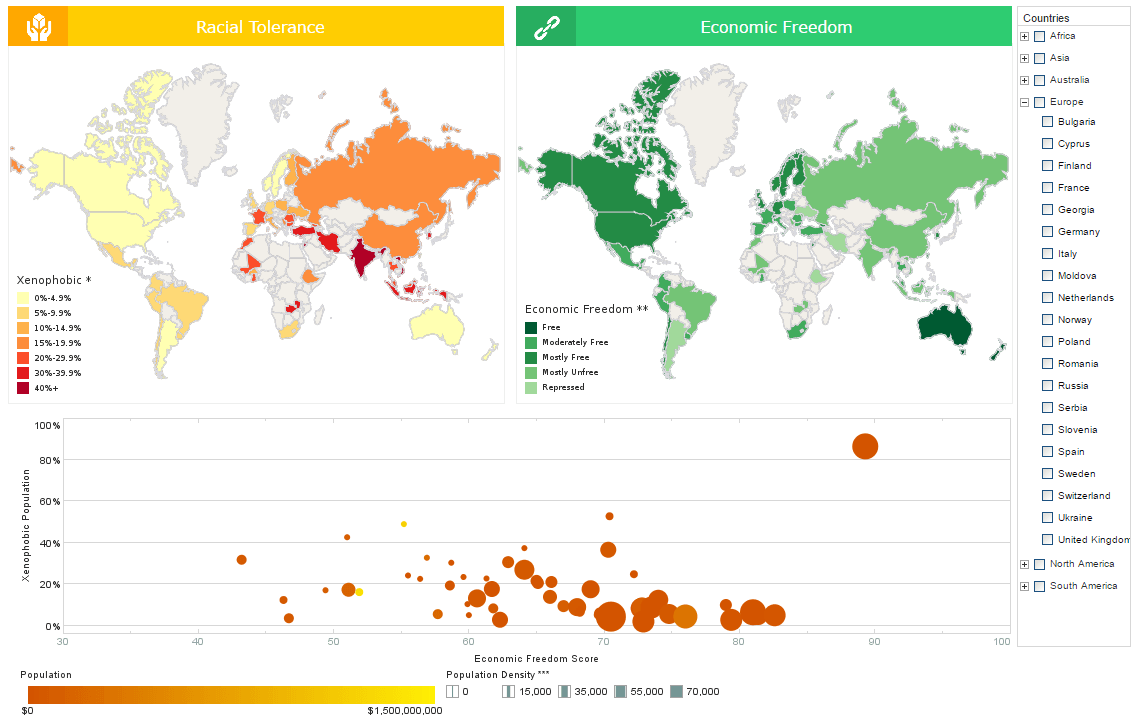How Business Intelligence Customers Are Using Hadoop
This is the continuation of the transcript of a Webinar hosted by InetSoft on the topic of "10 Biggest Big Data Trends."
Larry: Yeah, the one thing that I would add to that is, as I talked to business intelligence customers and I read about how they're using Hadoop, they have data scattered across a number of sources in the cloud and on premises. They have data in Excel. They have data in Hadoop, and you know companies should focus on creating platforms that are source agnostic and that allow customers to tap into all these sources at the same time.
Even when you're trying to answer real business questions, chances are that you will almost always have to combine multiple source of information. So I'm not surprised that the purpose built tools for Hadoop are going away.
Abhishek: Great alright our next trend --- organizations leverage data links from the get-go. So what do we mean with this one? It's essentially coming from a point where you know, we're probably more than a decade now into the kind of the start of Hadoop as an open source project, and our hash tag clearly says the start of Hadoop is an open-source project and gaining adoption, but for the first few years it was in many ways I would say considered kind of an IT or data science experiment, and it wasn't seeing broad adoption within organizations.
There was little bit of a trend where IT departments within companies would stand up to do presentations, and then expect the business users around the company to come without having a known project in mind. And I think that type of approach slowed down the adoption and minimized the value of Hadoop was really bringing into organizations.
That's changed incredibly rapidly as we've seen the adoption growth, but at the same time there's very few companies out there, they probably don't hear talking about a data like strategy or thinking about their data lake, and they think about it in the way of needing value to come very, very quickly.
It may take years to build out this robust data lake that has data from every single place coming in, and you know Holly mentioned the internet of things creating new types of data. That's going to be an ongoing journey, but companies are waiting you know years or even months to fill up the data lake with the data before starting to derive value from it.
It's part of their data strategy. We will have a data lake. We will have this kind of reservoir for all our data. We are going to have multiple tiers and use cases inside of that data lake, and something that is going to be used for machine learning and predictive algorithm models, other things that are going to be used for data exploration, and kind of finding those unknown unknowns.
Other things that are to going to be used include feeding dashboards and really answering repeatable sets of questions. And so the data lake is just being tied together with the broader analytics and data platform strategy for companies, and they are getting a lot of value out of this. We expect customers will start to get value out of their data lake much more quickly than they ever have in the past. Larry or Holly, anything you guys you want to jump in and add here?
Larry: Yeah. there are a couple of things I would add to that, Abhishek, and again this is what I've seen the most successful customers do in this regard is, the first thing is that, if you want to make Big Data a success within the organization, IT and business have to work together.

Your Big Data Deployment
Your Big Data deployment, your investment moved to solve the business problem, a business problem that can be the answer or which can be actually measured in some way, one that is brought in by the leadership at a very early stage. That doesn't feel like a software evaluation.
When you do that a couple of things happen, and this is something that Gartner has discovered in its survey of some of the leading organizations. In looking at Big Data adoptions that the most successful organizations did deploy, they are not perpetually piloting or experimenting.
They are not perpetually developing strategy or knowledge gathering. They are deploying, and they are iterating success. So they launch and learn and IT and Business are involved at every step of the way, and that's what I've seen some of the most successful organizations do.

